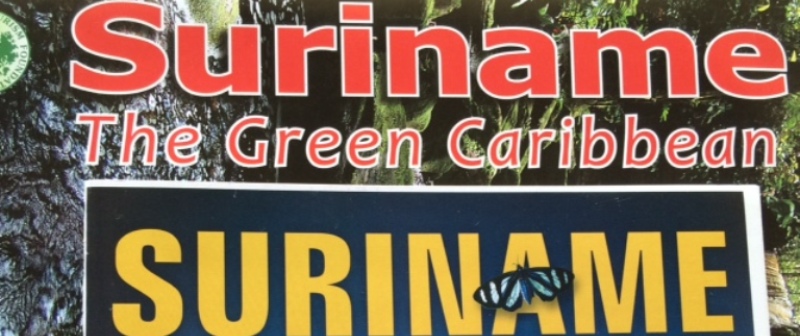
18 May Blog: When historians delve into the present
Unlike social scientists, many historians do not very often engage in a dialogue with their research subjects. For, as far as we know, the dead don’t read or speak back. But what happens if a historian delves into the present? Rosemarijn Hoefte reflects on what is for her a new experience.
Talking about nation branding
Sitting on the veranda of my Paramaribo hotel on a Sunday afternoon in late November 2015, I talked with Martin Panday, a former manager of the state-sponsored Tourism Foundation Suriname. The focus of our conversation was nation branding. Promotion of tourism is an important element of Suriname’s branding efforts. I had invited Martin for an interview because of his sharp insights on the tourism industry that he shared in his bi-weekly column in the Suriname newspaper, de Ware Tijd.
Among the topics we discussed were (eco)tourism – Suriname is one of the most densely forested countries on earth – “target groups,” budgets and politics, commitment and so on. It was an inspiring and thought-provoking conversation as Martin didn’t mince words about Suriname’s limited success in marketing its tourism potential.
Writing about nation branding
Nation branding is usually not explored by historians. Given my research on nation building in Suriname – in my opinion a form of internal marketing — I was invited to contribute to a volume on external marketing or nation branding. Back in grey and cold Leiden, I reflected on my stay in Suriname and the interviews I conducted. I was excited about the results and started to organize my materials and write.
Nation branding is a process in which a state enhances its position within the global economy by creating a recognizable image. Nation branding through tourism is one of the two case studies explored in my article and, given all the new information I had gathered, the first topic I wanted to tackle. Believe it or not, just as I began to write, I received a message from my colleague and friend, Hebe Verrest, about a blogpost that had appeared on the United News website. Five days after my arrival in Amsterdam, Martin Panday had already posted his version of our conversation.
Thus, while I was still digesting my interviews, one of my interviewees had already reflected on it and provided his own account and interpretation. When I clicked on the website, I felt a certain anxiety as if entering unknown territory: what would I do if Martin’s interpretation of our conversation differed greatly from mine? Should I contact him to discuss it? Should I reply to him in my article, knowing that the slow academic publication process might delay my rebuttal by one or even two years after his blog post appeared? Should I ignore it? To my relief, our recollections were similar. And of course, I added Martin’s blog as a source in the article.
Dealing with the present
Martin’s last line is: “I think I have given Rosemarijn a headache rather than relevant information…” Rest assured, Martin, you haven’t given me a headache, but food for thought; not only on tourism branding but especially on relations with informants who are public figures, active online, and who respond to the interview before the historian has had time to digest and analyze all the recently gathered information. It gives the research and writing process a new and welcome dynamism.
(Rosemarijn Hoefte is a historian specialized in the Caribbean. Her main research interests are the history of postabolition Suriname, migration and unfree labor, and contemporary Caribbean history.)




No Comments